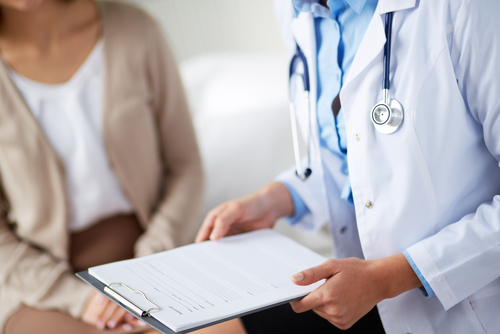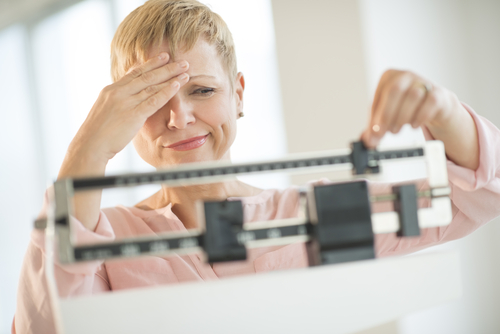What is adenomyosis?
Adenomyosis is a benign disease when endometrial tissue, which normally lines the uterus, exists within and grows into the muscular wall of the uterus. The displaced endometrial tissue continues to act as it normally would — thickening, breaking down and bleeding — during each menstrual cycle. The blood can get trapped in the uterine wall producing a hard and enlarged uterus. Though adenomyosis is not considered a life-threatening condition, the frequent pain and heavy bleeding associated with it can have a negative impact on a woman’s quality of life.
Because the symptoms are so similar, adenomyosis is often misdiagnosed as uterine fibroids, however, the two conditions are not the same. While fibroids are masses of tissue attached to the uterine wall, adenomyosis is a growth within the uterine wall.
Adenomyosis presents in two different forms.
1. The first type appears as a solid mass and is called “Adenomyomas”. They appear much like and can be mistaken for uterine fibroids.
2. The second, and more common type, is the diffuse disease that spreads out within the uterine muscular wall.
What are the risk factors of adenomyosis?
Adenomyosis is a common condition and is frequently seen in women in their early to middle 40’s and women who have had children. Women who have had prior uterine surgery may be at increased risk for adenomyosis. As high as 62% of women who had a hysterectomy were found to have this disease on pathology reports. The etiology and cause of adenomyosis remains unknown.
What are the signs and symptoms?
The signs and symptoms can be similar to those for uterine fibroids while adenomyosis can coexist with uterine fibroids. The severity is often directly proportional to the degree of involvement and penetration into the uterine muscle. Many patients with adenomyosis can be without symptoms just like fibroids, but most commonly women report the following symptoms:
- Dysmenorrhea (painful periods)
- Heavy periods with large clots
- Prolonged bleeding cycles
- Severe and increasing abdominal pain throughout the month
- Abdominal bloating
- Back pain
- Painful Intercourse
How is adenomyosis diagnosed?
A pelvic exam by your doctor may reveal an enlarged and tender uterus. Modern imaging methods such as ultrasound and MRI have been a great aid in evaluating for adenomyosis in women with suggestive clinical symptoms. The only true and conclusive test to diagnose adenomyosis is a uterine muscle biopsy.
How is adenomyosis treated?
Mild symptoms may be treated with over-the-counter pain medications such as nonsteroidal anti-inflammatory drugs (NSAIDs) and the use of a heating pad to ease cramps.
Hormone therapy: Symptoms such as heavy or painful periods can be controlled with hormonal therapies, however, symptoms typically return once the medications are stopped.
Endometrial ablation: This procedure destroys the lining of the uterus and has been found to be effective in relieving symptoms in some patients where adenomyosis hasn’t penetrated deeply into the uterine muscle wall.
Surgery: Surgical resection of the adenomyosis alone is not feasible in most cases. The only definitive surgical option for adenomyosis is a hysterectomy.
Uterine artery embolization: Fortunately for women who want to avoid surgery, Uterine Artery Embolization (UAE) is an effective and safe therapy for adenomyosis, which can be performed by our specialized physicians at Horizon Vascular Specialists. In this minimally invasive procedure, tiny particles are used to block the blood vessels that provide blood flow to the adenomyosis. The particles are guided through a tiny tube to the arteries feeding the adenomyosis. With the blood supply interrupted, that area of adenomyosis will shrink in size with improvement in symptoms. This procedure is most commonly used to help treat uterine fibroids.
Visit our Women’s Health section to learn more about our services and see how Horizon Vascular Specialists can help you.








